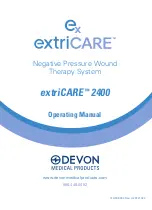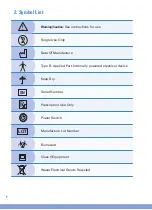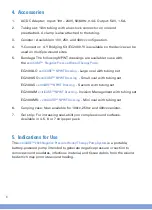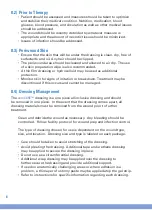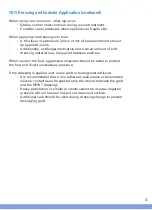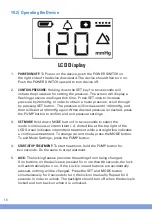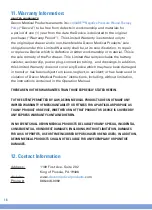
6. Contraindications for Use
The
extriCARE™ 2400 System
should
NOT
be used in the following conditions:
•
Exposed vessels, organs, or nerves.
•
Anastomotic sites.
•
Exposed arteries or veins in a wound. All exposed vessels and organs in
and around the wound must be completely covered prior to initiation of NPWT.
Note:
A thick layer of natural tissue is preferred. Several layers of fine meshed
non-adherent material or bio-engineered tissue may be an alternative. Ensure
that protective materials will maintain their position throughout therapy.
•
Fistulas, unexplored or non-enteric.
•
Untreated osteomyelitis.
•
Malignancy in the wound. The system may be used after excision of
malignancy if all margins are clear.
•
Excess amount of necrotic tissue with eschar. Note: The system may be
used with a minimal amount of slough or after debridement of necrotic tissue.
•
Wounds which are too large or too deep to be accommodated by the dressing.
•
Inability to be followed by a medical professional or to keep scheduled
appointments.
•
Allergy to urethane dressings and adhesives.
•
Use of topical products which must be applied more frequently than the
dressing change schedule allows.
7. Warnings
•
Review this manual prior to using the
extriCARE™ 2400 Negative Pressure Wound
Therapy Pump System
. If clarification is needed, contact technical personnel or
Devon Medical Products at 866-446-0092 prior to use. Additional questions can be
immediately addressed as well.
•
Do not use the
extriCARE™ 2400 Negative Pressure Wound Therapy Pump
around
explosive or flammable material. Do not use the pump in an MRI environment
or hyperbaric chamber. Disconnect prior to defibrillation.
•
This device should be used only under the direction of a trained professional,
such as a doctor or nurse.
•
Larger canister sizes (400cc or larger) should only be used in a facility where
drainage can be closely monitored.
•
Negative Pressure Wound Therapy
has not been cleared for use on children.
•
Use a properly rated charger to charge the lithium battery. Incorrect
voltage and/or current can cause fire.
•
Do not place this device at temperatures greater than 170°F for more
than 2 hours which may cause a battery fire.
•
If battery swells up, gets hot, or smokes while charging, disconnect the charger
immediately. This may cause the battery to leak, and the reaction with air may
cause the chemicals to ignite, resulting in fire.
5
6

